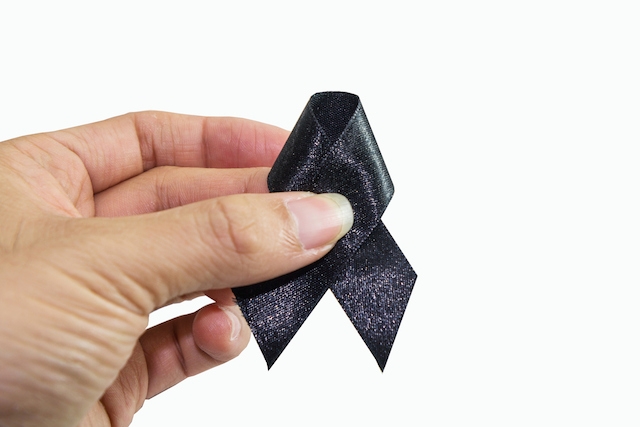Kriah is a Hebrew word meaning “tearing.” It refers to the act of tearing one’s clothes or cutting a black ribbon worn on one’s clothes. This rending is a striking expression of grief and anger at the loss of a loved one.
Kriah is an ancient tradition. When the patriarch Jacob believed his son Joseph was dead, he tore his garments (Genesis 37:34). Likewise, in II Samuel 1:11 we are told that King David and all the men with him took hold of their clothes and rent them upon hearing of the death of Saul and Jonathan. Job, too, in grieving for his children, stood up and rent his clothes (Job 1:20).
Kriah is performed by the child, parent, spouse and sibling of the deceased. It is usually done at the funeral home before the funeral service begins. If a black ribbon is used, it is provided by the funeral director. Kriah is always performed standing. The act of standing shows strength at a time of grief. A cut is made on the left side of the clothing for parents — over the heart — and on the right side for all other relatives. Sometimes people choose to express deep feelings of grief by cutting on the left side for relatives other than their parents.
As the tear or cut is made, the family recites the following blessing:
With your help, My Jewish Learning can provide endless opportunities for learning, connection and discovery.
Barukh atah Adonai Eloheinu melekh ha’olam dayan ha’emet.
Blessed are You, Adonai Our God, Ruler of the Universe, the True Judge.
The torn garment or ribbon is worn during the seven days of shiva (but not on Shabbat and festival days). Some people continue the practice for the 30-day period of mourning [sheloshim].
Reprinted with permission from The Jewish Mourner’s Handbook (Behrman House), by an editorial committee chaired by Rabbi William Cutter.
Sign up for a Journey Through Grief & Mourning: Whether you have lost a loved one recently or just want to learn the basics of Jewish mourning rituals, this 8-part email series will guide you through everything you need to know and help you feel supported and comforted at a difficult time.
Looking for a way to say Mourner’s Kaddish in a minyan? My Jewish Learning’s daily online minyan gives mourners and others an opportunity to say Kaddish in community and learn from leading rabbis.
Adonai
Pronounced: ah-doe-NYE, Origin: Hebrew, a name for God.
kriah
Pronounced: KREE-yuh, Origin: Hebrew, Jewish mourning custom of tearing one's garment.



